Pwllheli and Llanbedrog Tramway
(initially known as the West End Tramway)
History
The story of the Pwllheli and Llanbedrog Tramway is intimately bound up with that of Solomon Andrews & Son, a company which had its origins in the Cardiff cab trade in the 1860s, but which had meanwhile grown dramatically to include tramway and omnibus operation, property development and construction. The Pwllheli & Llanbedrog Tramway in fact grew out of the company's development of the West End in Pwllheli, starting life as a constructor's tramway ferrying stone from a nearby quarry (unsurprisingly also owned by SA&S), subsequently being converted to a passenger-carrying tramway, no doubt due to Solomon Andrews' keen eye for a business opportunity.
The tramway was built to a gauge of 3ft 0ins, and was horse-drawn for its entire life; passenger services are believed to have commenced on the 1st August 1896. The line initially ran from the West End, which was situated to the south of Pwllheli town centre, southwestwards along the shoreline for a distance of approximately 1.25 miles, and was initially known as the West End Tramway. In 1897, Andrews opened an attraction at Glyn y Weddw Hall near Llanbedrog, extending the tramway southeastwards to it, whilst also building an extension northwards from West End to meet Cardiff Rd, and along the latter to a terminus in the centre of Pwllheli at the junction with Ala Rd. The extended tramway was 3.88 miles long and was now known as the Pwllheli and Llanbedrog Tramway; it is thought to have opened in mid-July 1897, though the precise date appears not to have been recorded. The tramway was always operated in two sections —Pwllheli to West End and West End to Llanbedrog — even though the tracks were connected.
Unlike Pwllheli Corporation's horse-drawn tramway, the Pwllheli and Llanbedrog Tramway was quite profitable, operating a busy schedule in summer, and a reduced one in winter. Although relations between SA&S and the council were less than cordial at times, the company appears to have been quite happy to continue running what was, by the 1920s, a rather quaint old-fashioned tourist tramway. The weather was however to interfere — catastrophically — on the 28th October 1927, when a severe gale washed away large sections of the tramway, and the land it ran upon, along the coastal section. Although the latter section was immediately abandoned, it is thought that trams continued to run on the 'town' section, which had not been damaged, until September 1928, whereupon the tramway was closed, the cost of reconstruction proving to far outweigh its revenue potential.
Uniforms
In common with the majority of horse tramways in the UK, drivers and conductors wore informal but smart attire — trousers, jackets, waistcoats, shirts and ties. Headgear appears to have largely followed the fashion of the day, predominantly flat caps, which became increasingly bigger and baggier by the 1920s. All surviving photos that show conductors, reveal them to have been young lads, whilst the drivers were invariably older men. No badges or licences of any kind were worn on either the jackets or caps.
There is no evidence whatsoever, either photographic or documentary, to suggest that the company employed the services of inspectors.
It is unclear whether women were ever employed (this would have been during the Great War), though photographic evidence would suggest not.
Further reading
For a history of the system, see: 'Pwllheli and Llanbedrog Tramways' by J F Andrews; D Brown and Sons (1995).
Images
Horse tram drivers and conductors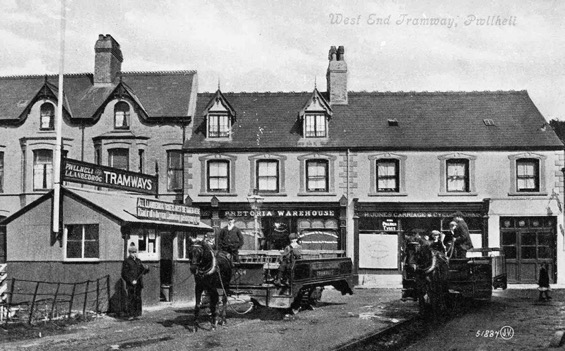
A well-known post card by Valentine's of Dundee which is believed to have been taken in 1907. Although difficult to make out, the driver of Horsecar No 4 (on the left) is wearing informal attire with a deerstalker hat, whilst his colleague on the tram to the right sports a flat cap. The very young-looking conductors are both wearing smart but informal attire, along with flat caps. With thanks to the National Tramway Museum. 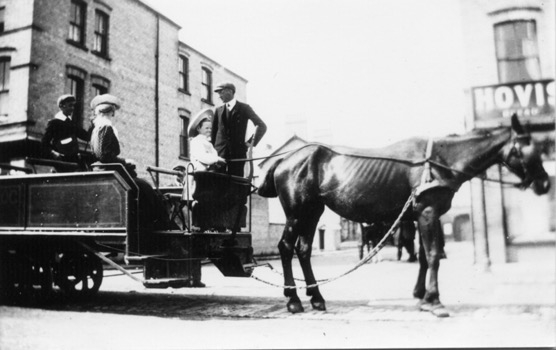
The driver of an open horsecar gazes back down the vehicle whilst a young passenger has a go at wielding the reins — photo undated, but almost certainly taken in the early Edwardian era, and probably in Cardiff Road. Photo courtesy of the Tramways and Light Railway Society, with thanks to David Voice.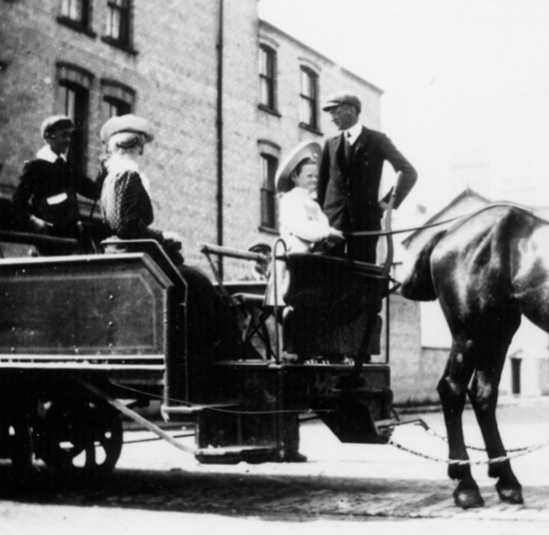
A blow-up of the above photo showing the driving, who is clearly wearing and informal jacket and a flat cap.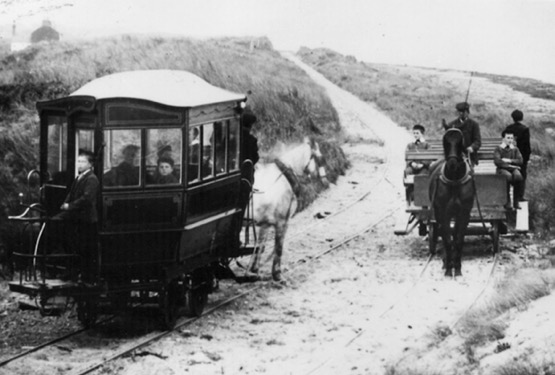
One of the Pwllheli and Llanbedrog Tramway's enclosed horsecars passes one of its open toastrack cars in the dunes between Pwllheli and Llanbedrog — photo undated, but probably taken prior to the Great War. The boy on the rear platform is almost certainly the conductor. Photo courtesy of the Tramways and Light Railway Society, with thanks to David Voice.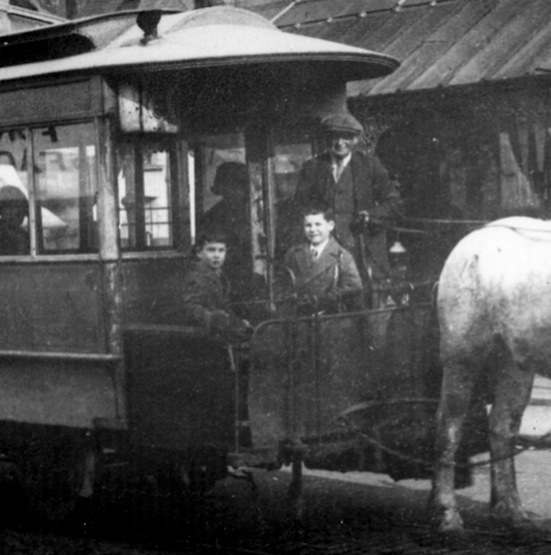
A driver poses with two young passengers on the platform of one of the enclosed horsecars — photo undated, though given the rather careworn condition of the vehicle, probably taken in the 1920s. Photo courtesy of the Tramways and Light Railway Society, with thanks to David Voice.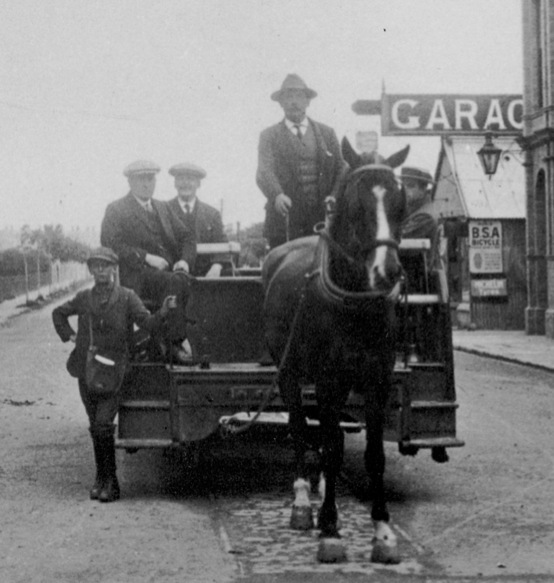
A trilby-hatted driver and his young conductor (in flat cap with cash bag) pose with an open horsecar near the terminus in Cardiff Road, Pwllheli — photo undated, but probably taken in the 1920s. Photo courtesy of the Tramways and Light Railway Society, with thanks to David Voice.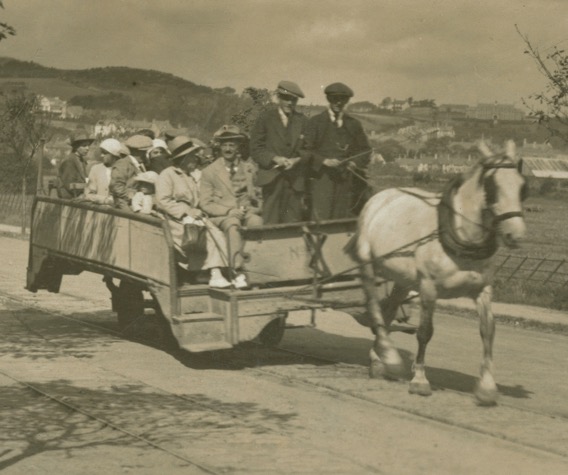
A rather warped (hogs backed) open horsecar in Cardiff Road — photo undated, but probably taken in the late 1920s. Both men are wearing robust jackets and trousers, and the large baggy caps of the day. With thanks to the National Tramway Museum. 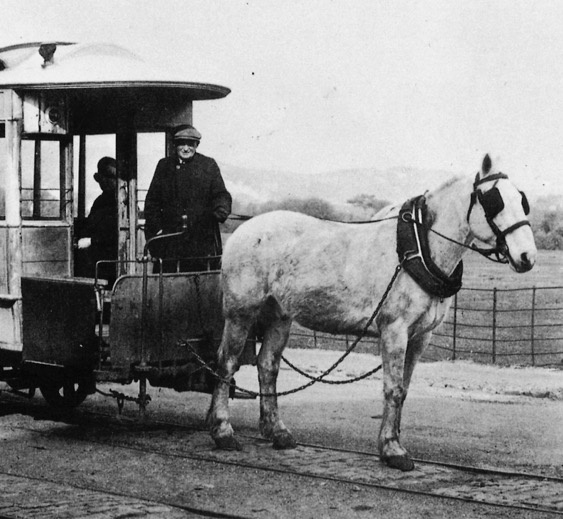
Another view in Cardiff Road, this time of an enclosed horsecar, with a somewhat chilly looking driver — photo undated, but again probably taken in the late 1920s. Photo courtesy of the Tramways and Light Railway Society, with thanks to David Voice.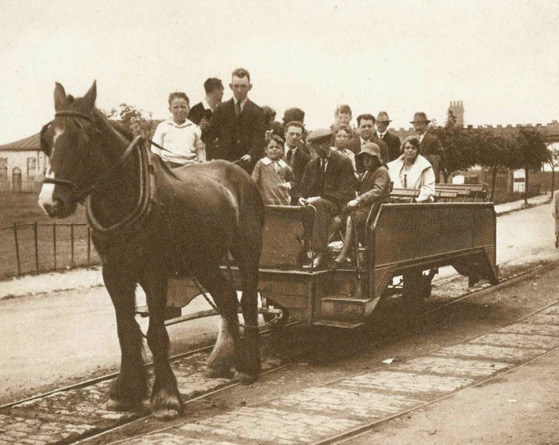
The driver of an open horsecar poses for the camera, possibly in Cardiff Road — photo undated, though in view of the trilby hats, probably taken in the 1920s. With thanks to the National Tramway Museum. 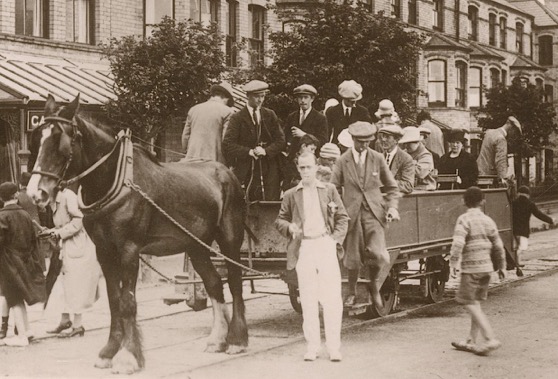
Another shot in the upper part of Cardiff Road — photo undated, but almost certainly taken in the 1920s. With thanks to the National Tramway Museum. 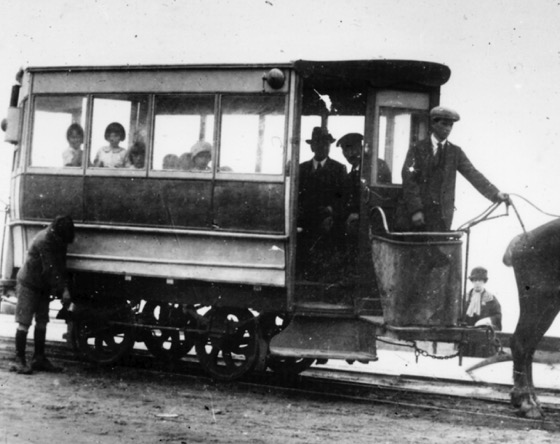
The driver of a small enclosed horsecar attends to his charge, probably along West End Parade, whilst the young conductor's attention appears to have been drawn to one of the axle boxes — photo undated, but certainly taken in the 1920s. Photo courtesy of the Tramways and Light Railway Society, with thanks to David Voice.